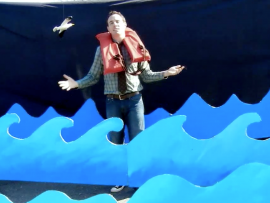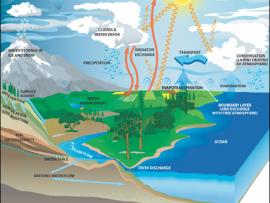Browse Hydrologic Cycle Resources
Browse Hydrologic Cycle Resources
Primary Topic:
Subtopics:
Type:
Keywords:
Summary:
This lesson helps students learn about the atmosphere by making observations and taking measurements.
Primary Topic:
Subtopics:
Type:
Standards:
Keywords:
Summary:
The short video, 'For Good Measure' explains why scientists turn to satellites to get a worldwide view of rainfall.
Primary Topic:
Subtopics:
Type:
Keywords:
Summary:
This video (4:56) uses a combination of cartoon characters, a scientist, and a series of different Earth-observing satellites with data animations to teach the various parts of the water cycle.
Primary Topic:
Subtopics:
Type:
Summary:
In this webquest, you will learn a little about the GPM mission, and then will focus on the Earth’s water cycle.
Primary Topic:
Subtopics:
Type:
Keywords:
Summary:
The process by which water moves around the earth, from the ocean, to the atmosphere, to the land and back to the ocean is called the water cycle. These animations each portray a component of the water cycle.
Primary Topic:
Subtopics:
Type:
Keywords:
Summary:
The process by which water moves around the earth, from the ocean, to the atmosphere, to the land and back to the ocean is called the water cycle. These animations each portray a component of the water cycle.
Primary Topic:
Subtopics:
Type:
Summary:
Part 1 of a 4 part webquest that teaches the basics of precipitation science. Prepares students for the GPM Anime Contest.
Primary Topic:
Subtopics:
Type:
Standards:
Keywords:
Summary:
Educational handout in the shape of a raindrop. The front shows a diagram of the water cycle, and the back has information about GPM and facts about water.
Primary Topic:
Subtopics:
Type:
Keywords:
Summary:
This article explains the basics behind the water cycle and includes many good visuals. It provides some good background information about our water cycle as well as providing students with many real-world applications.
Primary Topic:
Subtopics:
Type:
Keywords:
Summary:
This animation uses Earth science data from a variety of sensors on NASA Earth observing satellites as well as cartoons to describe Earth's water cycle and the continuous movement of water on, above and below the surface of the Earth.











